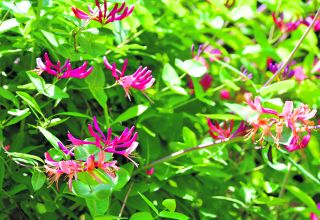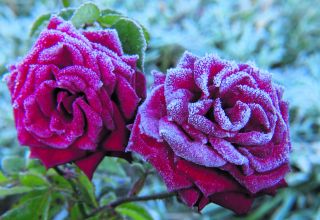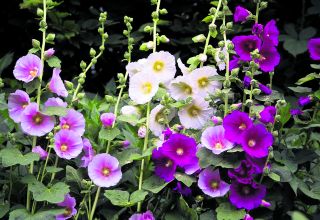
The distinctive feature of hollyhocks is their height, often up to three metres and their ‘jack-and-the-beanstalk’ stems are a delight to bees and butterflies as much as gardeners.
When you think of an English cottage garden, you think of hollyhocks. Their tall, towering stems can line a path, stand either side of a gate or bring height and colour to the back of a border.
They are wonderful plants that flower all summer long, and no country-style garden is complete without them. They bring height and colour to all borders and are wonderfully straight forward to grow and tend for.
With their open, saucer flowers splashed all the way up their jack-and-the-bean-stalk stems, they will bring as much joy to you as they do to the butterflies and bumblebees.
Hollyhocks (Alcea) are flowering shrubs and form a distinct genus in the mallow family (Malvaceae). The ancient garden mallows originally come from the Orient. For a long time, they have also felt at home in English gardens.
Their distinctive feature is their height.
Hollyhocks can grow up to three metres tall and are popular for planting in the back of herbaceous borders or even along house walls, which makes them stand out particularly well.
Hollyhocks are usually biennial, but in favourable locations may well be perennial. If they are reseeded annually, you can look at their beautiful flowers year after year. In the first year, only the rosette of leaves is formed, from which in the second year grows a sturdy, barely branched stem with numerous flower spikes.
The stem and lobed leaves of hollyhocks, about 15 cm in size, are light green in colour and rough-haired. The flowering period of hollyhocks lasts from July to September.
There is a great variety of hollyhocks species and cultivars, whose flowers appear in many different colours and can be unfilled or filled. Probably the best known and most common hollyhock species is the common hollyhock (Alcea rosea). It is also called garden mallow.
The best time to sow hollyhock seeds undercover is in early spring. You can sow the seeds directly outdoors in May and June. If you have bought hollyhocks as plants in pots or raised them from seed, they can be planted out May to July. They flower the following year after planting.
Hollyhock seeds should be sown undercover in April and May. The seeds can also be sown directly outdoors in May and June.
If you’re planting seeds undercover, fill a tray with compost and water it well to ensure that it is consistently moist. If you water after sowing, the water can move the seeds about and they might end up bunching together.
Sow the large seeds individually, spacing about an 5cm (2in) apart on the compost surface. Don’t push the seed, leave them on the surface so they are clearly visible as you continue to sow. When the tray is full, cover lightly with compost.
Place the tray in a warm spot to germinate. You don’t need light at this stage. Cover seed trays with an empty, opened out compost bag to keep in warmth and moisture and to speed up the germination process. After about a week, check trays every morning and night for germination. Once this starts, remove the light-excluding plastic.
Hollyhocks take around 10-14 days to germinate and then another three to four weeks before they’re ready for pricking out. If roots are showing at the base of the tray, they’re ready to move on.
Pricking out hollyhock seedlings
To prick out, handle only the seed leaves, not the stem (which bruises very easily). Get a pencil (or stiff plant label) right under each plant and try to tease out every individual seedling, roots and all.
Place each seedling into its own pot of peat-free compost, firm down and water. The ideal spot for growing on has maximum all-round light. Ideally, plants should have warm roots but cool tops.
Hollyhocks will be ready for planting out in the garden by June, but won’t flower well until the following year. If you get the odd plant trying to flower sooner, snip off the flower spike. This helps the roots to get established before the demands of flowering begin – otherwise you might end up with a weaker plant and that could lead to more trouble with rust.
Deadheading
Hollyhocks self-seed readily if you allow the flowerheads to go to seed. If you don’t want this to happen (and you don’t want to collect the seed), you can cut the flower spikes at the base of the stem once flowering is over.
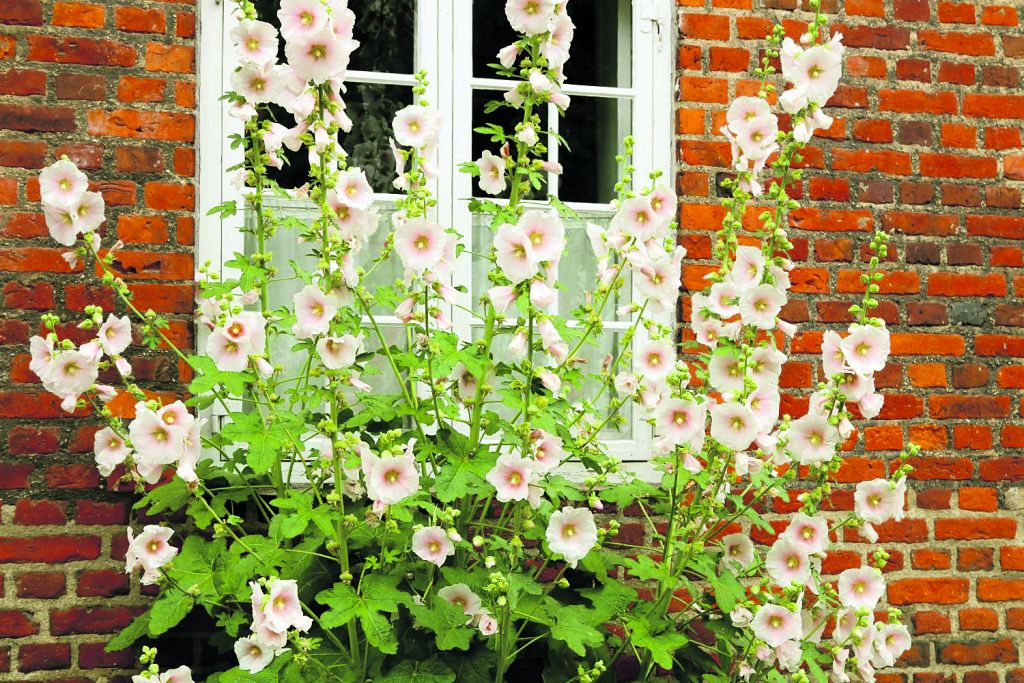
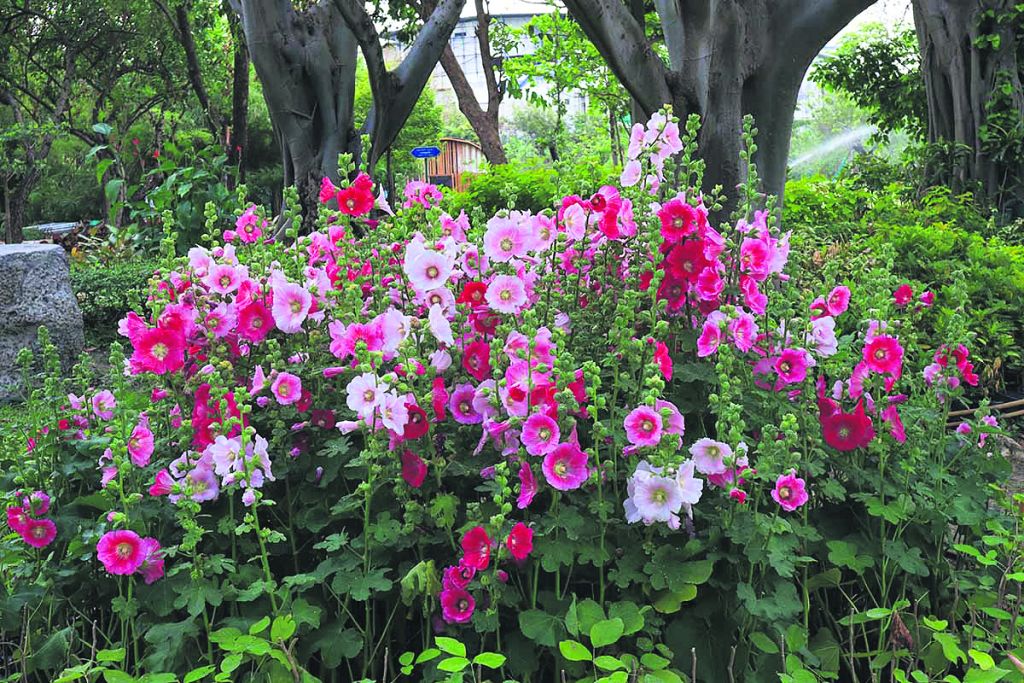
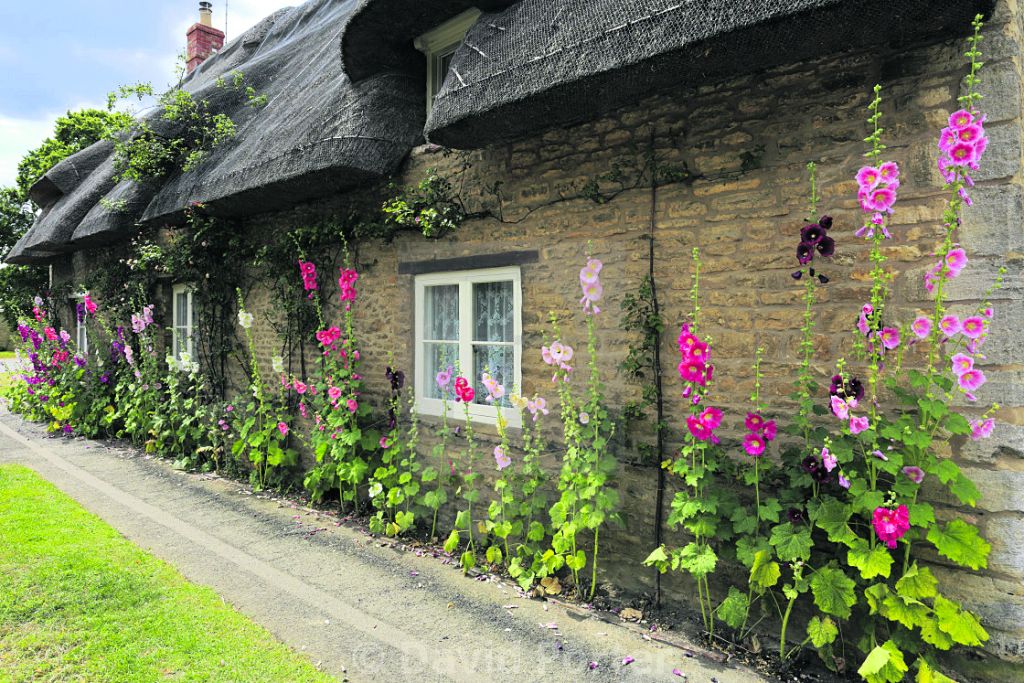
Propagating
You can allow hollyhocks to naturally self-sow, or you can wait for the seedheads to go brown and dry and then collect the seed – you can sow this in spring to make new plants.
Hollyhocks that have sprung up of their own volition will often creep to the sunny, open front of the bed. Watch out for this and dig some up and put them further back out of the limelight to get a balanced sweep.
Don’t transfer them directly, though – they need a short spell of TLC. So dig up self-sown seedlings and pot them into average size pots. Once the roots have filled it, plant them in the garden.




